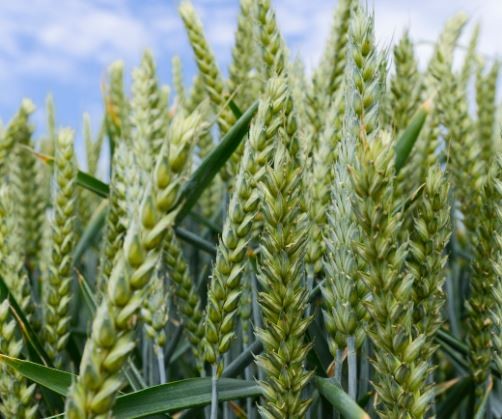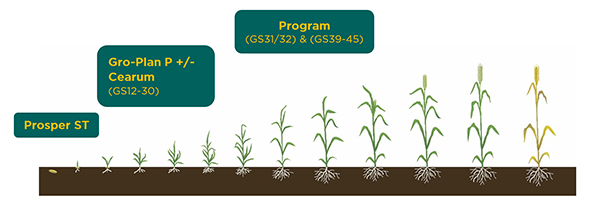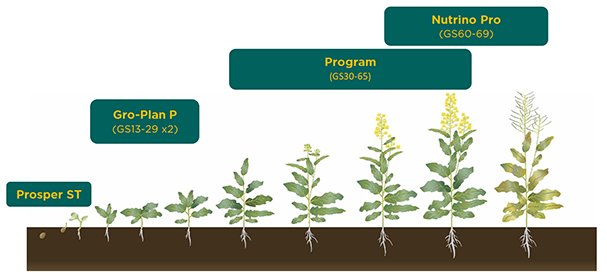Maximising your winter crops' potential with biostimulants
We are seeing an increased interest from growers when it comes to the use of advance micro-nutrition and biostimulants as part of their integrated approach to pushing crop performance. In fact, if you are a regular reader of our blog you will have seen some of the benefits mentioned in this post on early spring nutrition from Frontier agronomist, Peter Forster.
Given where we are in the season, we thought it would be useful to give an overview of biostimulants and their role in crop production – specifically how and when to use them. We'll also explain our BioPlan service and how taking a sequenced approach to applications can support overall performance and sustainability.
An explanation of biostiumlants
Let's begin by clarifying some details around biostimulants. Firstly, what are they?
A biostimulant is a material that contains substance(s) and/or microorganisms that stimulate natural plant processes to enhance nutrient uptake and efficiency, tolerance to abiotic stress and/or crop quality.
Impressive! Of course, they aren't a 'cure-all' remedy and can't reverse damage caused by stresses such as unfavourable weather. They can, however, help crops reach their highest potential by improving nutrient use efficiency which, in turn, aids stress recovery and stimulates growth in favourable conditions.
We take the same approach to biostimulants as we would to any crop protection or nutrition product; working with our manufacturers to ensure there is a known mode of action and using rigorous data from our 3D Thinking trials network so we - and you - can be confident of the results.
The sequenced approach
Although you may see a benefit from single applications of biostimulants, the best results are often seen from a sequence of applications. This approach sets your crop up to make the most efficient use of applied nutrients, thereby maximising its potential.
The sequenced approach we adopt is 'BioPlan', which is effectively a planned programme of biostimulant applications for a range of crops. The applications are all targeted at key growth stages to enhance crop development and resilience and, when used in conjunction with a micronutrient strategy, they combine to enhance the uptake, assimilation and use efficiency of applied nutrients.Our BioPlan recommendations are currently based around three key active ingredients:
- Phosphite: Seed treatment and early season foliar applications up to stem extension stimulate root growth, aid nutrient and water uptake and improve nutrient assimilation.
- R100: A patented combination of actives; gamma polyglutamic acid increases foliar nutrient uptake, whilst the diphenylurea biostimulants aid the production of cytokinin and subsequent plant growth.
- Pidolic acid: Applications from stem extension onwards support nitrogen assimilation and consequent crop growth and development. It has also been shown to aid chlorophyll retention in stressed crops, supporting continued photosynthesis.
These three active ingredients form part of the current five products within BioPlan. The table below gives you a broader overview of the products.
| Product | Biostimulant | Description |
| Prosper ST | Phosphite | Phosphite based seed treatment designed to speed up establishment and increase root biomass. |
| Gro-Plan P | Foliar phosphite | Suitable for use on a range of crops. It can be used alone, in a tank mix with Cearum and as part of the BioPlan sequence with Program. |
| Program | Pidolic acid & R100 | Contains a blend of biostimulants with complementary modes of action and a balanced, broad spectrum nutrient combination to increase yield and quality. |
| Cearum | R100 | Designed for use on cereals. Contains a balanced ratio of manganese, copper and zinc, combined with R100. It supports early plant establishment, tiller production and maximises photosynthesis for the maintenance of healthy green leaves. |
| Nutrino Pro | Pidolic acid & R100 | A low scorch nitrogen formulation containing magnesium and sulphur as well as two complementary biostimulants. It provides a controlled-release nutrient supply with variable length chain polymers releasing their nitrogen over six to eight weeks. |
So, what does a sequenced approach to biostimulant applications look like and how can you link it with your crop nutrition programme?
The graphics below show our BioPlan programmes for winter cereals and winter oilseed rape and how they correspond with the key growth stages at which you would be applying crop nutrition products.
Winter cereals
Winter oilseed rape
What comes next?
In time we will expand BioPlan to add more situation, growth stage and crop specific solutions – including, for example, anti-senescence compounds and microbial solutions to aid crop growth and stress resistance. But, as mentioned earlier, we will only add products that are supported by strong scientific data and trials results. In our next blog on this topic, we will explore how BioPlan can be used with your spring cropping and we'll look at some of the trials results we have seen.
Discover more about BioPlan
If you would like to find out more about BioPlan and how you can incorporate it into your crop production strategy, please speak to your local Frontier contact or get in touch.
Jim Stotzka - Lead on Sustainability
Edward Jones - SOYL and Sustainability Knowledge Exchange Manager
As a subscriber, you’ll receive email alerts each time a new blog is published so you can always stay updated with the latest advice and insights from our experts







Comments